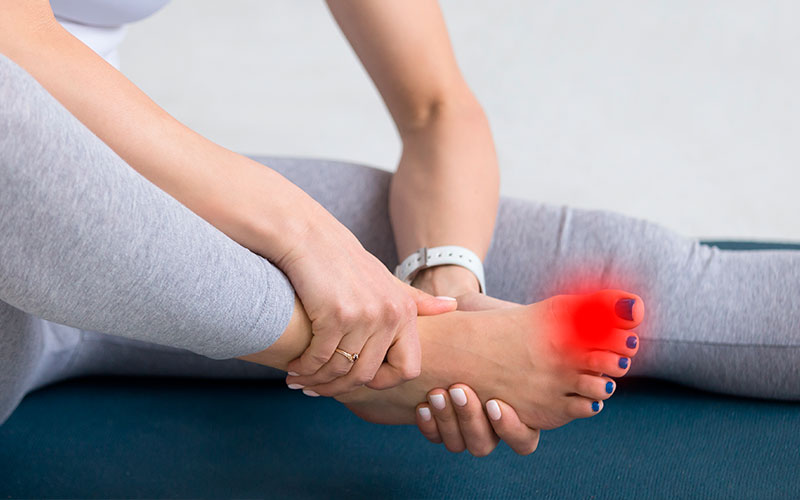Athlete’s Foot
Tinea pedis, or athlete’s foot as it is more commonly known, is by far the most common fungal disease affecting people. Although usually straightforward to treat, it recurs often and can spread to infect the nail beds.

Research has also shown that the presence of athlete’s foot increases the risk of nonpurulent leg cellulitis threefold, as well as increasing the risk of diabetic foot syndrome. It’s also important to note that, despite the severity of complications from an athlete’s foot infection, it is often misdiagnosed by both patients and doctors.
If you suspect that you have athlete’s foot, please get in touch. With many years of experience, we offer an accurate diagnosis and an effective course of corrective treatment.
What is athlete’s foot?
It is a dermatophyte foot infection affecting the soles of the feet and the skin between the toes. This pathogenic fungus can also spread to infect the nails, which is referred to as onychomycosis. It can spread throughout the body and is easily transmitted to other people.
Who does athlete’s foot affect?
Athlete’s foot is a dermatophyte infection, a fungal infection affecting the skin hair and nails. It is extremely prevalent, and the World Health Organization (WHO) estimates that dermatomycosis (fungal infection of the skin) affects around 20% of the world’s population, both male and female.
How does tinea pedis spread?
Athlete’s foot spreads more easily to people that are more genetically susceptible via contaminated floors, clothing, and towels. The susceptibility varies from person to person. Some people who are exposed to the same conditions, such as an infected gym shower, may not all develop athlete’s foot. The fungus spreads only on dead keratin and is unable to infect live deeper tissue. The dark, warm environments of modern shoes provide an ideal environment for the dermatophytes to thrive.
What are the different types of athlete’s foot?
There are three types of tinea pedis:
- Interdigital, between the toes
- Moccasin, scale covering the soles and sides of the feet
- Vesiculobullous, occurring on the soles of the feed and developing into blisters on the arch or the ball of the foot
How do I check if I have tinea pedis?
Our team of experienced doctors will examine the infected area and make an accurate diagnosis. It is advisable to consult with foot specialists as a tinea pedis infection can easily be mistaken from atopic eczema, contact dermatitis, erythrasma, psoriasis, or candidiasis.
What are the treatment options?
Your physician will determine the best treatment option for your condition. Depending on the type of infection, topical therapies are most likely to be effective with therapy duration varying from one week to over two months. As many patients focus only on the symptomatic areas and, as a result, struggle to successfully treat the fungal infection. We will demonstrate the correct application as well as prescribing the correct antifungal creams that will effectively treat the condition.
*Systemic therapy may be necessary for the treatment of chronic tinea pedis when topical antifungal treatment has not been effective.
Schedule an appointment
As a multi-medical practice, our specialist team of doctors are available to confirm a tinea pedis diagnosis and determine a corrective course of treatment. To schedule an appointment, please give us a call on 847-885-9525 or request one through the website.